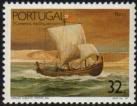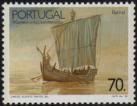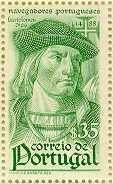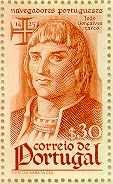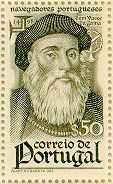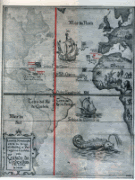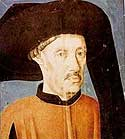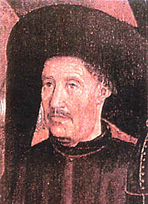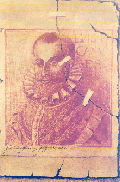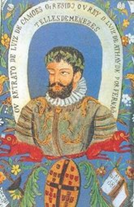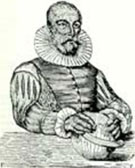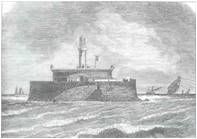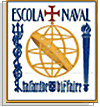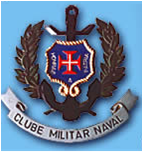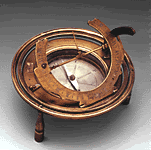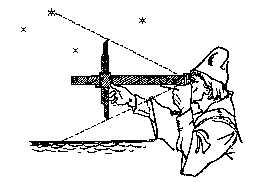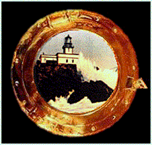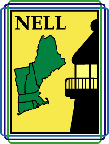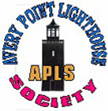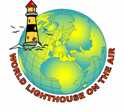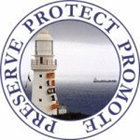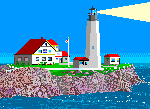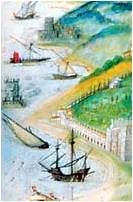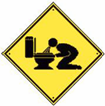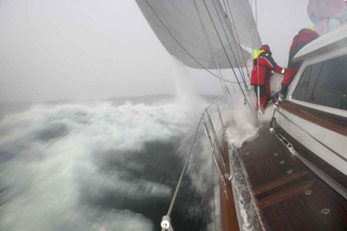
At the front of the Rolex Transatlantic Challenge fleet, both race leader Mari-Cha IV and Maximus are now making good progress directly toward Land's End, the southwestern tip of mainland Britain before they turn and cover the final 20 miles to the race's first finish line off the Lizard. At noon today, just 32 miles separated the two boats on the water, with 835 miles left for Mari-Cha IV to sail.
According to Mari-Cha IV's project manager and navigator Jef d'Etiveaud: "The boat is nicely sailing at 22 knots in good running conditions…finally, after a long upwind poker game with Maximus over the last two days. It has been quite intense for all on board, especially for the afterguard, which has been trying to anticipate the opposition's moves on the water. Are THEY going to stay north? Are THEY going to go south just after the position report?" After spending Saturday night with its mainsail down as the crew attempted to repair the broken headboard car, Maximus is now fully back up to speed jib-top reaching.
On board, navigator Mike Quilter says they have been averaging around 19 knots, while his computer is predicting an arrival time at the Lizard of 1000 UTC on Wednesday, June 1. But to do this, they must sail perfectly, and it also relies on their headboard repair holding. To beat Atlantic's 100-year-old record, a yacht must finish by Friday, June 3 no later than 22:11:19 UTC.
Co-owner Bill Buckley's dislocated shoulder is now almost fully mended, and he is back on deck. "We got all the medical books out, and there was plenty of discussion," recounts Quilter of how they fixed the shoulder. "We lay him face down on the bunk and gradually dropped his shoulder over the side of the bunk towards the ground, and that slipped it back in. Once the shoulder was back in, you could see in an instant him becoming much more comfortable. He's a tough old bugger."
On board Chris Gongriepe's Windrose of Amsterdam, captain Nick Haley says that yesterday they set a best day's run for the boat of 346 miles. By coincidence, this was the same day in the transatlantic race 100 years ago that Charlie Barr, at the helm of Wilson Marshall's Atlantic, a New York Yacht Club vessel, also scored the largest run of his crossing--341 miles. "She [Atlantic] was a bigger boat, but we were happy, because it beat our previous record by 20 miles," said Haley.
This morning, after the "upwind slog" as they crossed the Grand Banks, Windrose was fully powered up and making 14.5-15.5 knots at the front of the Performance Cruising class 1. "At the moment, we have 25-28 knots of true wind, and the breeze is 200-220 degrees true. We have full main, full foresail and staysail and code zero up," said Haley, who tentatively estimates their ETA at the Lizard sometime on June 3rd.
"There is a long way to go between now and then," he says. "We are not getting too confident just yet. With the boat being pressed so hard, the number one priority is to keep the boat in one piece. We are in a nice band of southwesterly flow, and we should be sailing fast on the starboard gybe all the way in. It looks like the breeze is dying out slightly as we close to the finish, but we are hoping we still have good pressure as far as the Lizard.
Some of our pictures show the Channel might be a bit slow, but if we can get to the Lizard still traveling fast, we'll be happy with that." Last night, Jose Aguinaga's 77-foot (23.6m) Ocean Phoenix, racing in Performance Cruising class 2, retired from the Rolex Transatlantic Challenge, the third yacht to do so. "We are on route to the Azores to effect repairs and then continue to England afterwards some time in June," wrote skipper Charlie Carlow. "Our sail wardrobe has taken a hammering, and with such a distance left to go, and continual attempts to fix sails, it's beginning to make our ETA very far away. The race rules state that there is no time limit.
However, some of our crew have other fixed obligations, and these will not be met with our current speed or our long-range weather forecasts." Leading the charge to the British Isles in Performance Cruising class 2 is John "Hap" Fauth's Whisper, and in the Classic division, A. Robert Towbin's Sumurun was 313 miles ahead of Dr. Hans Albreicht's Nordwind at noon today. 100 years ago, on day eight of the race for the Kaiser's Cup on board Atlantic, Frederick Hoyt wrote: "As soon as it was light enough to see, the mainsail with a single reef was hoisted, which did a lot to stop the rolling, and by daylight in the morning we were running before a strong southwest wind under fore and mainsails, squaresail, raffee and two topsails, the mizzen staysail being put on just after noon.
It was a dark, cloudy, disagreeable day with rain most of the time, and there was no chance of getting sights, so we had to depend upon our dead reckoning. This branch of navigating a ship is often done in a very slipshod manner, the chances being taken that there will be sights, but Captain Barr is most thorough and our courses, speed, deviation and variation are entered in the log every hour, and when we picked her off at noon today she was just on the circle and we had made the course determined upon at noon yesterday."
Listen to satellite telephone interviews from the Rolex Transatlantic Challenge: www.regattanews.com
...
...
...
Key Partners Marketing Services (KPMS)
2, Rue des Terreaux,
CH-2000
Neuchâtel, Switzerland
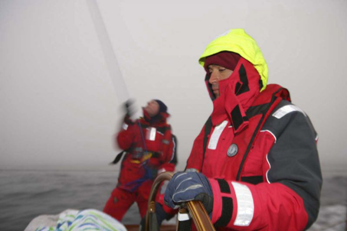
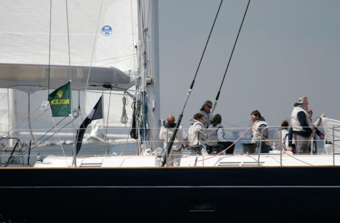
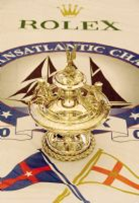
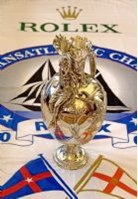
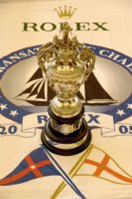
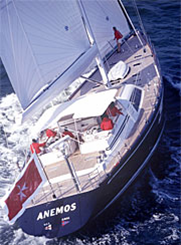

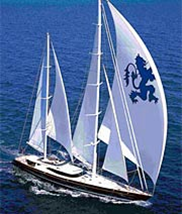
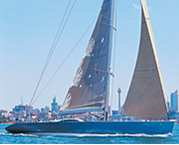
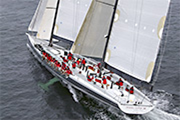
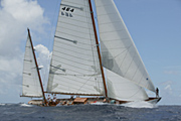
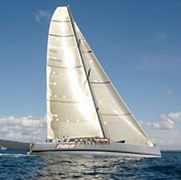
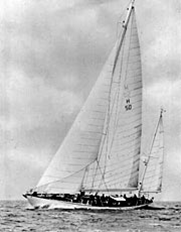
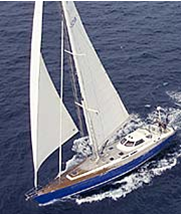
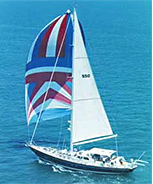
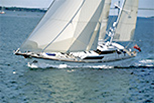

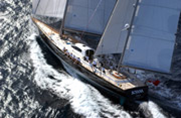
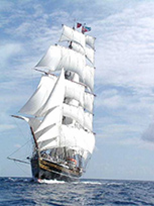
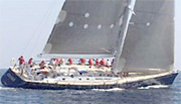

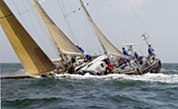
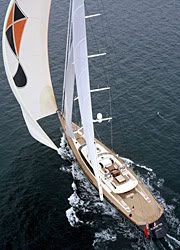
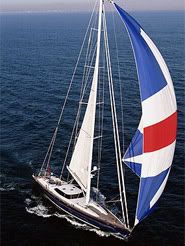

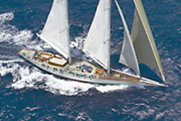
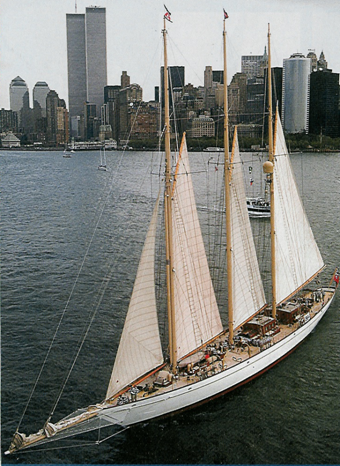
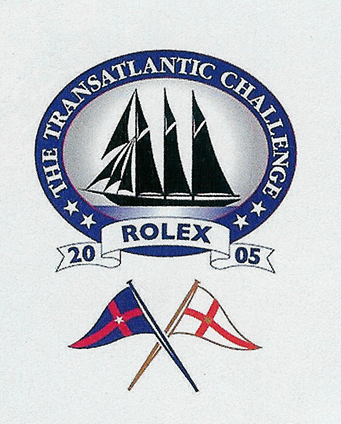
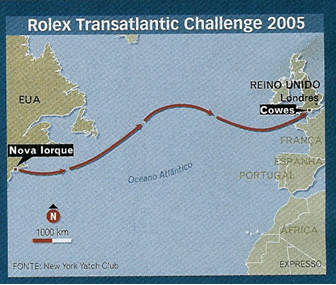
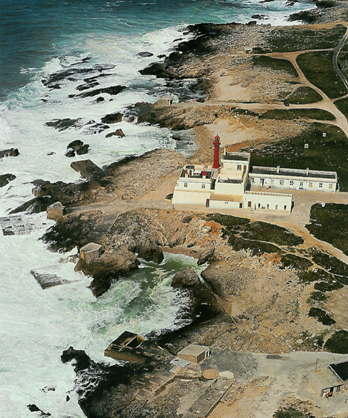
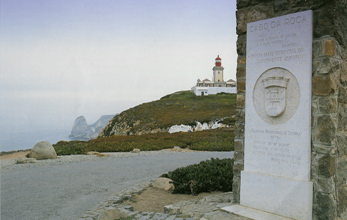
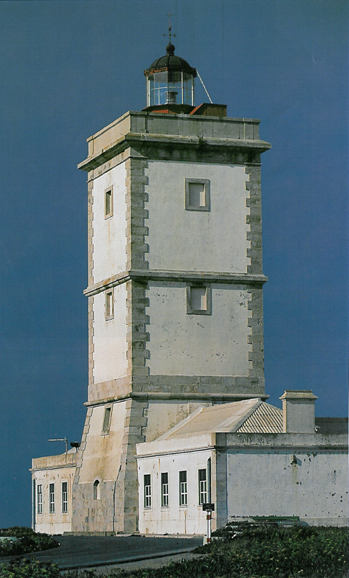
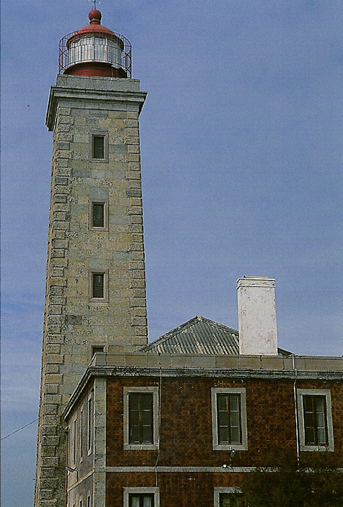
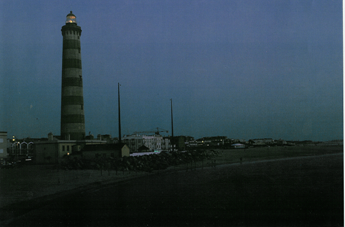
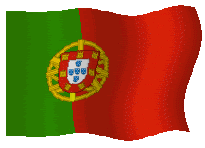


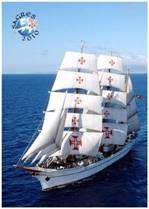





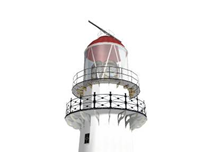













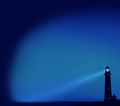


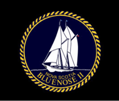

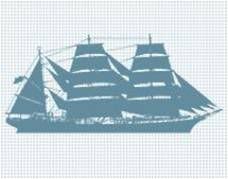
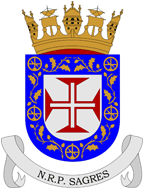
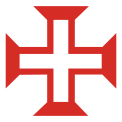
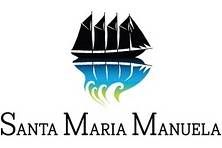
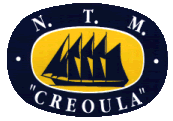

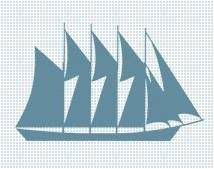

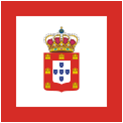
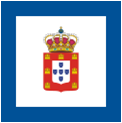
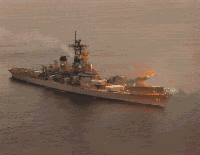


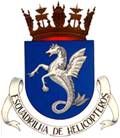
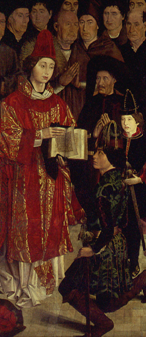
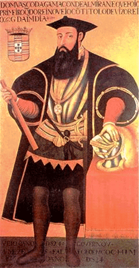
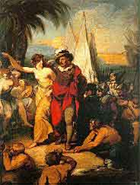


%202025-10%20Luis%20Miguel%20Correia.png)



























